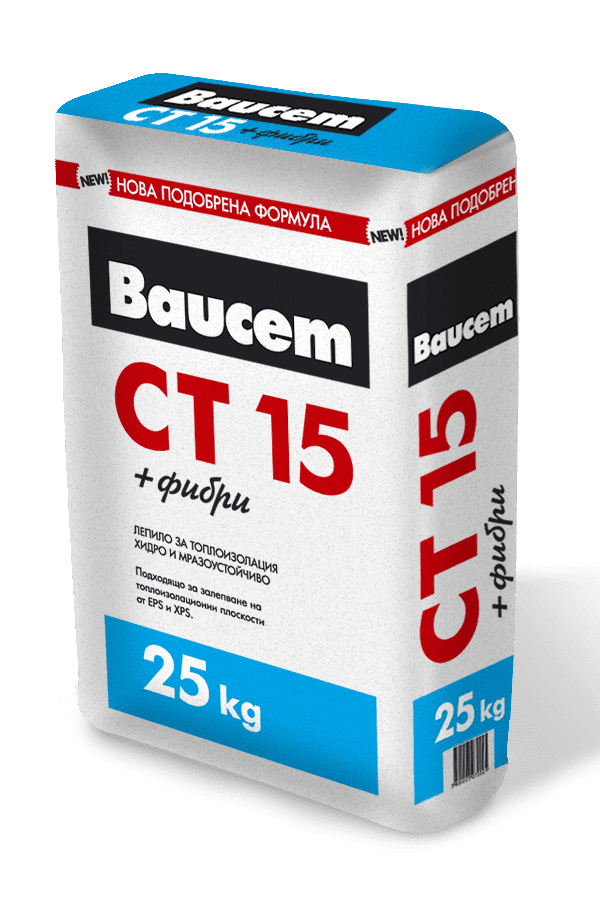Adhesive for thermal insulation BAUCEM CT15
Adhesive mixture suitable for internal and external thermal insulation, depending on the type of installation.
10 in stock
Quantity per carton
12 product
Мinimum quantity
100 product
Quantities per pallet
60 product
Delivery time
14 days
Description
Cement-based dry mix with added polymers, plasticizers, and mono-fibers for added strength and flexibility.
The adhesive mixture is suitable for bonding expanded and extruded polystyrene panels (EPS/XPS) and mineral wool slabs for interior or exterior thermal insulation.
Product handling and risks:
The adhesive contains Portland cement which is an eye, skin and respiratory irritant.
Work with protective clothing.
In case of eye contact, wash thoroughly with water and seek medical attention.
More information in the safety data sheet.
Store in dry areas, not permanently exposed to moisture, on wooden pallets.
Shelf life in original sealed containers – 12 months from date of manufacture.
Packaging:
In paper bags with a net weight 25 kg
On pallets of 42 bags = 1050 kg
| Tensile strength after 28 days | 2.6 N/sq.mm |
| Tensile strength after immersion in water | 2.8 N/sq.mm |
| Tensile strength after thermal treatment | 2.8 N/sq.mm |
| Vitality | 4 hours |
| Adhesive open time | 10-15 min. |
| Outside use | Yes |
| Inside use | Yes |
| Dense hardening | 24 hours |
| Consumtion rate | 3.5 kg./sq.m |
The adhesive mixture is applied to the substrate with a toothed trowel. When working on flat substrates, the adhesive is applied on a ridge with a toothed trowel to the entire surface of the insulation board. When working on uneven substrates, the application of the adhesive is carried out by point bonding, by applying a strip along the edges of the board and several balls of the mixture evenly spaced over the surface.
The substrate is prepared as follows: it is thoroughly cleaned of substances that may interfere with adhesion: grease, lubricating oils, paints, varnishes, water dispersion paints, etc. Irregularities in the substrate must be previously smoothed out by plastering. When working on dry surfaces such as cellular concrete, gypsum board, lightened concrete, etc., it is best to use a dry adhesive.
Mixture preparation: Mix five parts dry adhesive with one part water in a suitable container, pouring the water first and then adding the mixture. Mix well with a mechanical stirrer for 1-2 minutes or until a homogeneous mixture is obtained. The mixture thus prepared is allowed to "ripen" for 5 minutes, after which it is stirred again. The amount of water depends on the desired density of the adhesive mixture. Do not add other materials such as cement, sand, etc. to the adhesive so as not to impair its properties.
